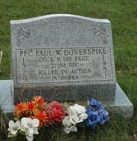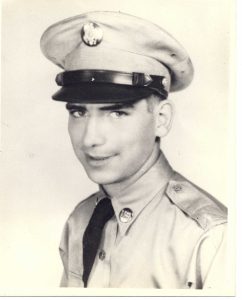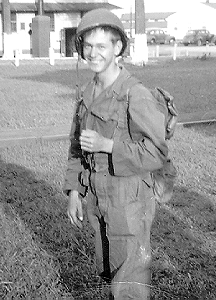Clarence Eugene Postletwait, age 31, from Pennsylvania, Erie county.
Service era: Korea
Date of death: Thursday, November 2, 1950
Death details: During the last week of October 1950, Republic of Korea (ROK) Army forces under the control of the U.S. Eighth Army were advancing deep in North Korean territory, approaching the Yalu River on the Chinese-Korean border. Chinese Communist Forces (CCF) struck back in a surprise attack, engaging the ROK 1st and 6th Divisions near Unsan, some sixty miles north of Pyongyang. The U.S. 1st Cavalry Division, with the 8th Cavalry Regiment in the lead, was rushed forward to reinforce the ROK units in the Unsan area. On November 1, the regiment’s 1st Battalion took up positions north of Unsan, while the 2nd Battalion moved to guard the Nammyon River valley west of town, and the 3rd Battalion was placed in reserve at the valley’s southern end. Sergeant First Class Clarence Eugene Postlethwait joined the U.S. Army from Pennsylvania and served in Medical Company, 8th Cavalry Regiment, 1st Cavalry Division. On November 2, 1950, he and other members of the Medical Company were supporting 8th Cavalry Regiment elements near Unsan when they received orders to withdraw. During this moving battle, SFC Postlethwait was seriously wounded by enemy grenades and then captured. He was marched as a prisoner of war (POW) northward to a small holding camp at Sambakkol, near the Yalu River, where he spent several weeks before this group was moved to Camp 5 at Pyoktong. While in Sambakkol or en route to Camp 5, SFC Postlethwait died from the effects of prior wounds. His death was witnessed by fellow POWs and he was laid to rest just short of Camp 5 at the side of the trail. No burial information was recorded. His remains have not been recovered or returned to the U.S. since the ceasefire. Today, Sergeant First Class Postlethwait is memorialized on the Courts of the Missing at the National Memorial Cemetery of the Pacific.
Source: National Archives, Defense POW/MIA Accounting Agency



